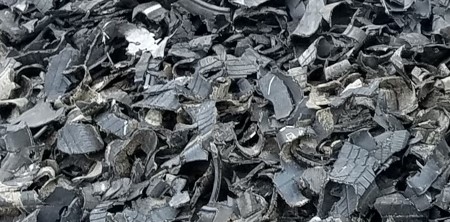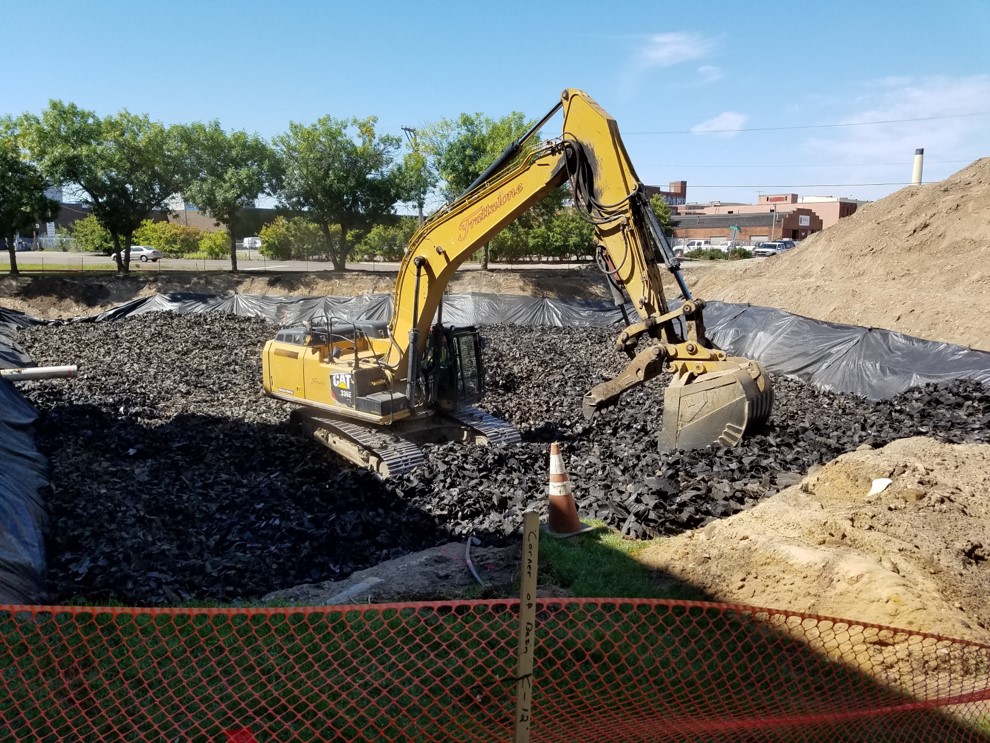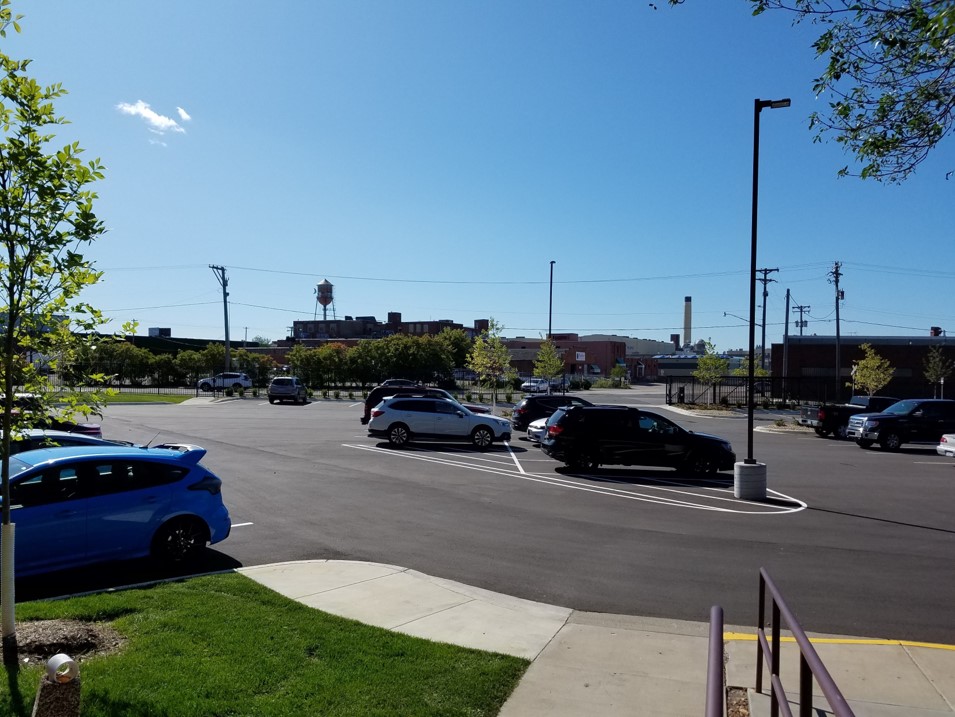AET has installed an innovative and very cost-effective on-site stormwater infiltration system…
If you visited the AET St. Paul office within the last six months, you probably noticed our new parking lot. But what you might not have noticed are the thousands of tire shreds that lie beneath it. Before you start thinking “what the heck?” here’s why our parking lot sits atop a layer of recycled tires.
Part of our “campus expansion” project at our Saint Paul office involved the expansion and reconstruction of our main parking lot, which required updating our stormwater system in accordance with the National Pollutant Discharge Elimination System (NPDES) permit. According to the NPDES, the stormwater must be held and treated on the property by infiltrating the stormwater into the ground.
Thankfully, our site’s natural geology of sandy soils is conducive to infiltration, so we were able to meet the permit’s primary requirement for holding and treating stormwater on the property. However, to avoid having to relinquish valuable space to create a large conventional stormwater infiltration pond, we opted for installing an infiltration pond below our parking lot.
We began by removing the existing blacktop and excavating a basin within the parking lot footprint. Next, we performed soil borings, soils laboratory testing, preliminary permeability calculations, and double-ring infiltrometer testing on the soils below the basin to make sure stormwater would infiltrate into the subsurface as designed.
Now, here’s where the tire shreds come in: to hold stormwater, an infiltration basin below a parking lot must be filled with an aggregate material that can act as a “storage reservoir” for the surge of stormwater that flows into the basin after a rain event, while, at the same time, providing suitable structural support for vehicle parking.
To accomplish this, the fill material must be porous and permeable enough to store the groundwater as it infiltrates into the soils below the basin. The typical convention is to fill infiltration basins with washed stone aggregate to achieve the necessary porosity and structural support. We decided to use tire shreds for the job.
When we say “tire shreds” we aren’t talking about the pebble-size tire crumbs you see on playgrounds and athletic tracks. The tire shreds we used (technically known as Tire Derived Aggregate, or TDA) are recycled tire scraps measuring roughly 4 to 6 inches wide and 6 to 18 inches long.

Close up view of recycled tire shreds
As it turns out, tire shreds provide a greater storage capacity than washed stone aggregate (the voids between the tire pieces are greater than the voids between the stone aggregate, leaving more room for storing stormwater). Moreover, the cost of tire shreds is considerably less than that for washed stone aggregate.
Also, since tire shreds are a recycled material, they can be used in accordance with the Minnesota Pollution Control Agency (MPCA) standing beneficial use determination. We’ve worked on the design and installation of stormwater systems for two Saint Paul Port Authority (SPPA) projects that used the same tire shreds with much success: the redevelopment of the former Midway Stadium site into the Saints Business Center, and the redevelopment of the former East Saint Paul 3M campus into the Beacon Bluff Business Center. In both instances, tire shreds served as a cost-saving, storage-boosting solution for infiltration basin fill.
As with the two SPPA projects, First State Tire Recycling from Isanti, Minnesota, provided the tire shreds for our infiltration basin. They worked with our Saint Paul-based general contractor, Frattalone Companies, Inc., on estimating the required thickness of the tire shred layer. This involved estimating the amount of settlement that would be caused by the weight of the soil cover layer placed on top of the basin during construction of the parking lot. Frattalone also installed the tire shreds and performed the civil work.

Spreading the shredded tire aggregate
Once the tire shreds were in place, they were covered with a layer of geotextile fabric followed by a 3-foot-thick cover layer of soil fill. The fabric was used to keep the soil fill from mixing with the shreds. We performed testing on the fill to ensure it was of suitable strength and density to support the overlying blacktopped parking lot. Details can be found in our website version of this article.
We started work on our parking lot in August 2018 and completed the bulk of the project, outside of landscaping and a few cosmetic details, by October 2018. It was a firm-wide effort that involved our Geotechnical, Environmental, and Construction Services divisions.
Now that the rubber has truly hit the road, the new parking lot has provided a cost-effective on-site stormwater infiltration system as well as more space for employees and visitors. We’re proud to call it a win.
For more details on this project, please contact Eric Hess at ehesse@teamAET/com or Rob Flickinger at rflickinger@teamAET.com


